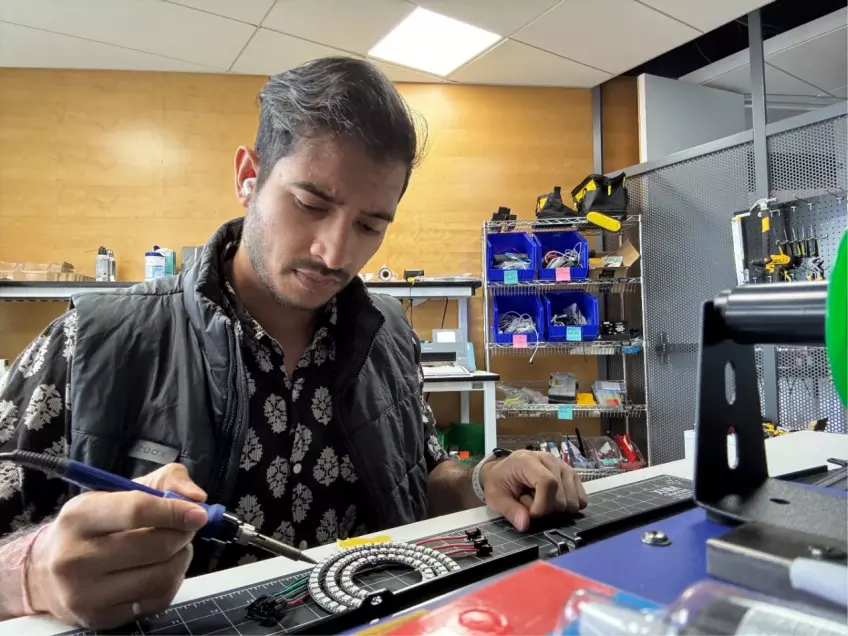The Creative Technologist: Bridging Engineering, UX, and Robotics
His work sits at the intersection of engineering, user experience, and design—fields that often speak different languages.

Parth Chandak
Parth Chandak is a creative technologist at Zoox, where he builds tools to help design teams test and improve how people interact with autonomous vehicles. His work sits at the intersection of engineering, user experience, and design—fields that often speak different languages. In this conversation, he explains how he helps bridge those gaps, the challenges he’s faced, and what he sees for the future of human-machine interaction.
How did you become a creative technologist in the autonomous vehicle field?
“I started out in manufacturing engineering,” Chandak says, “but I noticed that designers and engineers often worked separately, which made creating good user experiences harder. I wanted to help connect these different teams by building tools they could all use to work together better.”
That motivation eventually led him to Zoox, where he found an opportunity to shape the way autonomous systems are experienced by everyday users.
What does your work involve on a day-to-day basis?
“I build tools—both hardware and software—that allow teams to test how people interact with autonomous vehicles,” he explains. “The idea is to let designers try out their ideas without having to build an entire vehicle every time.”
This approach helps reduce the friction between research, design, and engineering. “Breaking down barriers between those groups is a big part of my job,” he adds. “I’ve designed testing tools and created workspaces that make it easier for these teams to collaborate.”
What have been some of your most important projects?
One of his key contributions was the development of an internal testing platform. “It reduced the testing cycle from three or four weeks down to just one,” he says. “That kind of time savings really helped teams iterate faster.”
Chandak also created hardware prototypes using microcontrollers to evaluate in-vehicle interactions—things like user authentication and interface design. “These prototypes helped us make important decisions about how users would actually interact with the vehicle.”
He worked on platforms for testing climate control and communication systems as well. “That had a direct impact on the rider experience,” he notes. “And setting up physical prototyping labs allowed us to build and test ideas quickly, before bringing them into the vehicle.”
What challenges have you faced in your work?
“Creating realistic testing environments was a big challenge,” Chandak admits. “Traditional design tools weren’t made for autonomous systems, so I had to find new ways to simulate those experiences in a way that felt real to users.”
Resource constraints were also a constant factor. “We didn’t always have access to expensive equipment,” he says. “I had to find creative solutions using open-source tools and affordable technology, while still gathering meaningful data.”
Another ongoing challenge was ensuring hardware and software worked seamlessly together. “It’s not enough to build a physical prototype—it also needs to integrate with the digital systems we’re using,” he says.
How have you helped different teams work together?
“One of the things I focused on was creating standardized testing methods that everyone—engineers, designers, researchers—could understand and use,” he says. “That alignment made collaboration much smoother.”
He also worked on making tools more accessible to team members without a technical background. “I created documentation and training that helped non-engineers use our prototyping tools,” he says. “By lowering the technical barrier, more people could participate in the design process. That led to better collaboration and more creative solutions.”
What do you see for the future of human-machine interaction?
“I think interdisciplinary cooperation will only become more important,” he says. “The best ideas will come from teams that bring together engineering know-how and design thinking.”
For Chandak, prototyping remains central. “We’ll need tools that let us test and refine ideas quickly—tools that make it easier to balance innovation with practicality.”
He also expects more personalization in future systems. “Experiences will need to adapt to individual users. That’s where creative technologists come in—to help ensure technology stays aligned with human needs.”
Next Story
